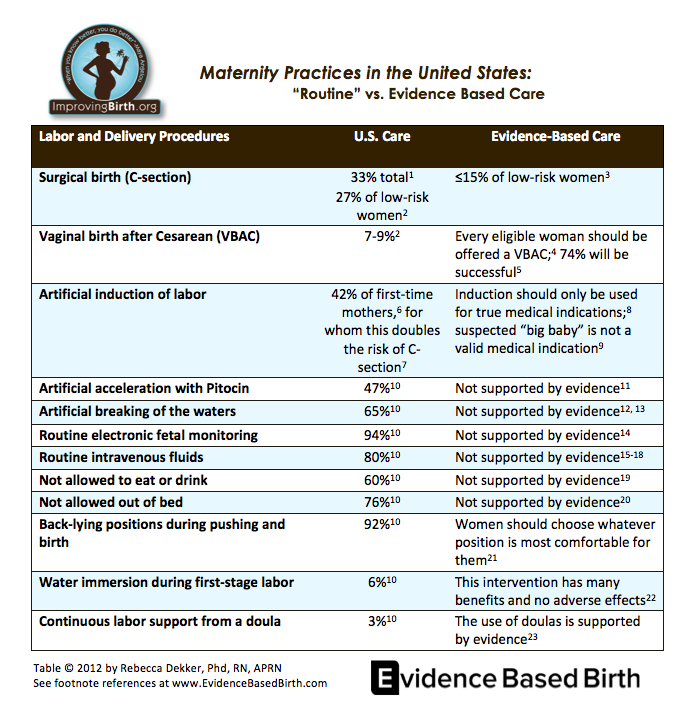Last weekend in our Prenatal yoga teacher training, we were discussing the homework the students were asked to complete. They were to write an essay on labor induction and the rise of cesarean births in our country. Though the sources varied, all the students arrived at the same conclusion: US cesarean and induction rates are higher than it is recommended by evidence-based research. The cesarean rate in the US has been hovering around 33% (1) for several years, even though the World Health Organization recommends that it be no higher then 15% (2). The American College of Obstetricians and Gynecologist (ACOG) has recently made a statement to deter doctors from providing cesarean delivery upon maternal request in efforts to lower the c-section rate. ACOG has also updates their guidelines for induction to encourage doctors to wait until week 39 for labor induction unless medically necessary.
Even with the backing of ACOG and other respected organization, there is a staggering difference in what is routinely practiced in maternity care and what has been proven to be beneficial for positive and healthy mom-and-baby outcomes. The chart below illustrates many of the routine interventions that are commonly employed in labor and maternity wards through out the US.

How Can You Avoid Unnecessary Interventions?
The best way to avoid falling into the trap of unnecessary interventions is to educate yourself about the standard maternity practices. Do your research, read books and take a formal Childbirth Education Class. A recent study published in the Journal of Perinatal Education found that “63% of women who attended classes reported that childbirth educators provided helpful information to assist in their decision-making process regarding their choices.Â
Also, once you have educated yourself and made some decisions about what interventions you are comfortable with, you need to talk to you care provider to make sure he/she is on board with these decisions. Assuming all is medically sound with mama and baby, most of the standard interventions can be modified to satisfy all involved.
Sources
1. http://www.huffingtonpost.com/2013/03/06/c-section-rate-variation-hospitals_n_2819024.html
2. http://www.childbirthconnection.org/article.asp?ck=10456
ACOG – Cesarean Delivery on Maternal Request
ACOG- Early Deliveries Without Medical Indications: Just Say No






